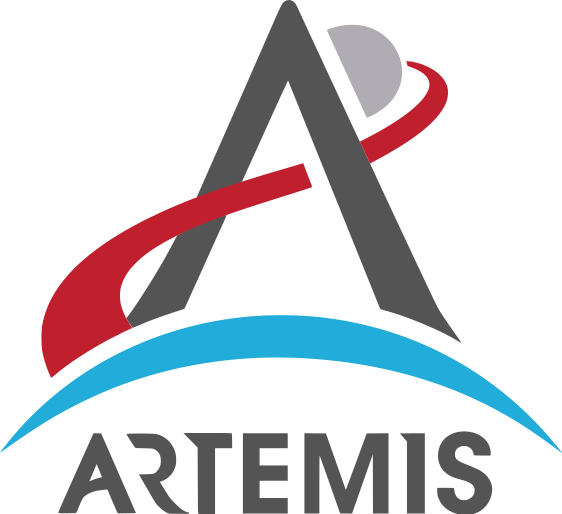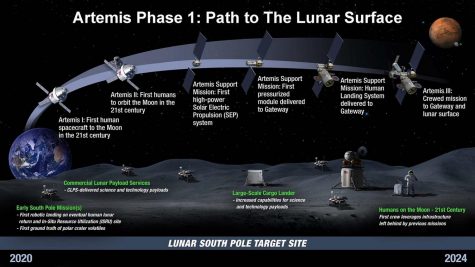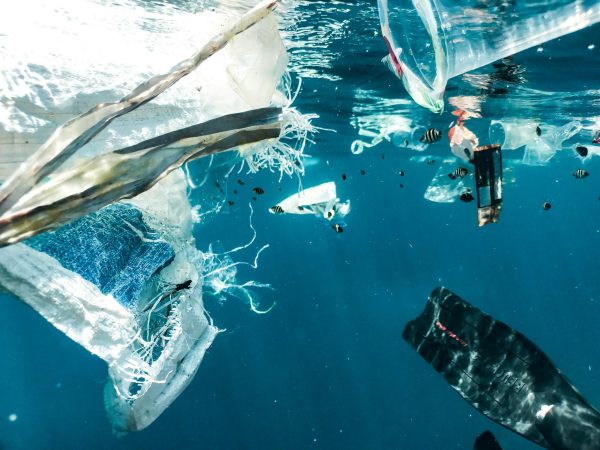The Artemis Project: Our Long-Awaited Lunar Return

Taken From Wikipedia Commons (Public Domain):
Author: NASA
There has been recent news about NASA planning to hire a new batch of astronauts, with over 18,000 people applying for the job. They have also upped the requirements for the job, changing the necessity of a bachelor’s in a STEM field to a master’s degree. A medical degree or the completion of a test-pilot program are also suitable alternatives to apply. The main reason behind this mass hiring of astronauts by NASA is due to it being critical to their latest project: The Artemis Program.
So what exactly is the Artemis Program?

Taken From Wikipedia Commons (Public Domain):
Author: NASA
The Artemis program is NASA’s attempt to land more humans (specifically a man and a woman) on the moon by 2024. However, this program’s purpose is not only to get people to land on the moon, but to also build up the infrastructure needed to create a permanent base on the moon. This is going to be done by sending multiple supply ships to the moon, the first of which is planned to be sent in 2021. The whole Artemis Project focuses on three main components: The Space Launch System (SLS), the Orion spacecraft and the Gateway.
The SLS is by far one of the most ambitious rockets NASA has ever built, if not the biggest. Its main purpose is to be able to send the astronauts and large supplies of cargo to lunar orbit without the need of taking multiple round trips. The first and current SLS rocket in construction (called Block 1) uses four RS-25 engines and 2 rocket boosters to launch more than 26 metric tons to orbit beyond the moon. The SLS is the first in a batch of new rockets NASA believes can not only be used for missions to Mars, but for more ambitious missions, exploring planets in the solar system like Jupiter and Saturn.
As for the Orion spacecraft, it is the spacecraft that will be used as an exploration craft that can provide safe travel and re-entry into the earth for the astronauts who will be part of the Artemis Project. Finally, by far the most interesting component of this entire project is the Gateway. The Gateway will be a small spaceship that will orbit around the moon and will function both as the living quarters and science lab for astronauts. Its functionality is similar to the ISS in that way; however, the Gateway is also meant to function as a “gateway” for astronauts to relax or conduct experiments before actually landing on the planet itself.
What problems has NASA encountered?
Alas, even though the Artemis Project is an idea that people want to soar and become a reality, it has been seeing a fair share of turbulence. The main issue that the project has been facing is budget issues. NASA’s budget given to them by the USA government is relatively low for the mass production and resources needed to have a successful launch. In addition to this, the SLS rocket construction (which was initially proposed to be completed by 2017) has been delayed yet again to 2021 due to the engineers dealing with the multitude of technical and logistical issues involved with lifting so many supplies out into lunar orbit. This has led the creation of the rocket to already go $2 billion dollars over-budget. NASA has also had troubles in figuring out the rocket itself and its scope which led to more delays. Fortunately, NASA has officially said that they have implemented measures to deal with their budgeting issues while also finishing the rocket by 2021. However many people are still skeptical about whether NASA will be able to achieve their current timeline after the multiple problems they have been facing.
Regardless of these problems, it is important to note that if NASA is able to successfully pull off this project, it will help humanity as a whole learn how to survive on a celestial body. Furthermore, there are economic benefits for creating a permanent base on the moon. One major benefit is creating the proper infrastructure to split the hydrogen and oxygen atoms in water molecules in the moon to create more hydrogen-based fuel. This would subsequently reduce the need to supply rocket fuel to the moon from earth. Having a proper settlement on the moon might also lead to more international collaboration in terms of space travel as a whole, which could lead to reduced political tensions. As an additional benefit, we would be able to look up at the moon and know there are people living there! Hopefully, this project acts as a catalyst, a sort of motivational boost for all current and to-be scientists to explore even further into the unknown.





Oskar Pickering • Sep 5, 2020 at
Thankyou very much for the informative article. In your opinion, will Artemis, or even SLS be finished before 2030?